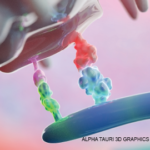Conclusion
The data from three large biologics registers give reassuring messages regarding the overall risk of incident cancers in patients treated with TNF blocking agents. Concerning the clinically important question of whether we can treat patients with prior malignancies with these agents, an explanation for the discrepant results between the British and the German registers could be that in the German register, the time between onset of the first tumor and start of treatment with a TNF inhibitor was considerably shorter than in the BSRBR (mean, 7.4 years compared with 11.5 years). Further, there was a difference between the registers in the comparator groups—a mean of 7.4 years since the last tumor at start of a conventional DMARD in the German register and 8.5 years in the British register. This means that more patients in both groups in the German register and more patients in the control cohort in the British register were treated within a time window where we have to expect an increased risk of recurrence. This suggestion is supported by the fact that in the German register, the recurrent malignancies in the TNF groups were all true recurrences of the same tumor type and site, whereas in the British register, new tumor types mainly occurred, and those types were unrelated to the first tumor. With their strategy of waiting longer before starting treatment with TNF inhibitors, the British colleagues were more on the safe side, which may explain their even lower risk in the TNF inhibitor group. However, patients with very active disease may be willing to accept a potentially and insignificantly increased risk of recurrence for the sake of adequate treatment of their RA. Therefore, the final responsibility remains with the treating physician. Data from other countries, possibly reflecting different practice styles, may be able to elucidate this further in the near future.
Dr. Strangfeld is group leader of the pharmacoepidemiology group and Dr. Zink is head of the epidemiology department at the German Rheumatism Research Center in Berlin.
References
- Carswell EA, Old LJ, Kassel RL, et al. An endotoxin-induced serum factor that causes necrosis of tumors. Proc Natl Acad Sci U S A. 1975;72:3666-3670.
- Coley WB. The treatment of malignant tumors by repeated inoculations of erysipelas. With a report of ten original cases. 1893. Clin Orthop Relat Res. 1991;262: 3-11.
- Bongartz T, Sutton AJ, Sweeting MJ, et al. Anti-TNF antibody therapy in rheumatoid arthritis and the risk of serious infections and malignancies: Systematic review and meta-analysis of rare harmful effects in randomized controlled trials. JAMA. 2006; 295:2275-2285.
- Bongartz T, Warren FC, Mines D, et al. Etanercept therapy in rheumatoid arthritis and the risk of malignancies. A systematic review and individual patient data meta-analysis of randomized controlled trials. Ann Rheum Dis. 2008; 68:1177-1183.
- Dixon W, Silman A. Is there an association between anti-TNF monoclonal antibody therapy in rheumatoid arthritis and risk of malignancy and serious infection? Commentary on the meta-analysis by Bongartz et al. Arthritis Res Ther. 2006; 8:111.
- Pincus T, Sokka T. Should contemporary rheumatoid arthritis clinical trials be more like standard patient care and vice versa? Ann Rheum Dis. 2004; 63(Suppl 2):ii32-ii39.
- Zink A, Strangfeld A, Schneider M, et al. Effectiveness of tumor necrosis factor inhibitors in rheumatoid arthritis in an observational cohort study: Comparison of patients according to their eligibility for major randomized clinical trials. Arthritis Rheum. 2006; 54:3399-3407.
- Askling J, van Vollenhoven RF, Granath F, et al. Cancer risk in patients with rheumatoid arthritis treated with anti-tumor necrosis factor alpha therapies: Does the risk change with the time since start of treatment? Arthritis Rheum. 2009; 60:3180-3189.
- Strangfeld A, Hierse F, Rau R, et al. Risk of incident or recurrent malignancies among patients with rheumatoid arthritis exposed to biologic therapy in the German biologics register RABBIT. Arthritis Res Ther. 2010; 12: R5.
- Wolfe F, Michaud K. Biologic treatment of rheumatoid arthritis and the risk of malignancy: Analyses from a large US observational study. Arthritis Rheum. 2007; 56:2886-2895.
- Dixon WG, Watson KD, Lunt M, et al. Influence of anti-TNF therapy upon cancer incidence in patients with rheumatoid arthritis who have had a prior malignancy: Results from the BSR biologics register. Arthritis Care Res. 2010;62:755-763.
- Mercer LK, Galloway LB, Lunt M, et al. The influence of anti-TNF therapy upon incidence of non-melanoma skin cancer (NMSC) in patients with rheumatoid arthritis (RA): Results From the BSR Biologics Register (BSRBR). Arthritis Rheum. 2009; 60 (10 Suppl):S772.
- 13. U.S.Food and Drug Administration. Information for healthcare professionals: Tumor necrosis factor (TNF) blockers (marketed as Remicade, Enbrel, Humira, Cimzia, and Simponi). www.fda.gov/Drugs/DrugSafety/PostmarketDrugSafetyInformationforPatientsandProviders/DrugSafetyInformationforHeathcareProfessionals/ucm174474.htm. Published August 4, 2009. Accessed September 15, 2010.
